- Clone
- 4C12 (See other available formats)
- Regulatory Status
- RUO
- Other Names
- Apo-3, LARD, TNFR25, TRAMP, WSL-1, DR3
- Isotype
- Armenian Hamster IgG
- Ave. Rating
- Submit a Review
- Product Citations
- publications
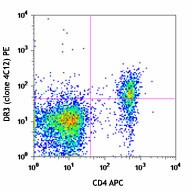
-

C57BL/6 mouse splenocytes were stained with CD4 APC and DR3 (clone 4C12) PE (top) or Armenian hamster IgG PE isotype control (bottom). -

| Cat # | Size | Price | Quantity Check Availability | Save | ||
|---|---|---|---|---|---|---|
| 144405 | 25 µg | 132€ | ||||
| 144406 | 100 µg | 298€ | ||||
DR3, also known as TNFRSF25, lymphocyte-associated receptor of death (LARD), WSL-1, TRAMP, TR3 and APO3, is a 55 kD glycoprotein belonging to the TNF receptor superfamily (TNFRSF). TNFSF25 is expressed at low level on CD4-positive, CD8-positive T cells and NKT cells. It has been shown to stimulate NF-κB activity and regulate cell apoptosis. The signal transduction of this receptor is mediated by various death domains containing adaptor proteins. Recently, it has been shown that TNFRSF25 is also expressed on Treg cells and regulates Treg proliferation.
Product DetailsProduct Details
- Verified Reactivity
- Mouse
- Antibody Type
- Monoclonal
- Host Species
- Armenian Hamster
- Immunogen
- Mtnfr25-Ig fusion protein
- Formulation
- Phosphate-buffered solution, pH 7.2, containing 0.09% sodium azide.
- Preparation
- The antibody was purified by affinity chromatography and conjugated with PE under optimal conditions.
- Concentration
- 0.2 mg/ml
- Storage & Handling
- The antibody solution should be stored undiluted between 2°C and 8°C, and protected from prolonged exposure to light. Do not freeze.
- Application
-
FC - Quality tested
- Recommended Usage
-
Each lot of this antibody is quality control tested by immunofluorescent staining with flow cytometric analysis. For flow cytometric staining, the suggested use of this reagent is ≤0.25 µg per million cells in 100 µl volume. It is recommended that the reagent be titrated for optimal performance for each application.
- Excitation Laser
-
Blue Laser (488 nm)
Green Laser (532 nm)/Yellow-Green Laser (561 nm)
- Application Notes
-
4C12 is an agonistic antibody. It leads to rapid and selective proliferation of pre-existing Tregs in vivo through TCR engagement with MHC class II (MHC-II) and IL-2 signaling. We recommend our Ultra-LEAF™ purified 4C12 antibody (Cat. No. 144411 and 144412) for agonist or in vivo studies.
- Application References
- Product Citations
-
- RRID
-
AB_2561688 (BioLegend Cat. No. 144405)
AB_2561689 (BioLegend Cat. No. 144406)
Antigen Details
- Structure
- 55 kD glycoprotein, contains one death domain and four TNFR-Cys repeats
- Distribution
-
CD4, CD8, NKT and Tregs at low level
- Function
- Plays a role in lymphocyte homeostasis, induces NFKB activation and apoptosis
- Ligand/Receptor
- TL1-A
- Cell Type
- NKT cells, T cells, Tregs
- Biology Area
- Apoptosis/Tumor Suppressors/Cell Death, Cell Biology, Immunology, Signal Transduction
- Molecular Family
- Cytokine/Chemokine Receptors
- Antigen References
-
- Taraban VY, et al. 2011. J. Clin. Invest. 121:463.
- Slebioda TJ, et al. 2011. Eur. J. Immunol. 41:2606.
- Schreiber TH, et al. 2010. J. Clin. Invest. 120:3629.
- Reddy PB, et al. 2012. J. Virol. 2012. [Epub].
- Gene ID
- 85030 View all products for this Gene ID
- UniProt
- View information about DR3 on UniProt.org
Related FAQs
- What type of PE do you use in your conjugates?
- We use R-PE in our conjugates.
Other Formats
View All DR3 Reagents Request Custom Conjugation| Description | Clone | Applications |
|---|---|---|
| PE anti-mouse DR3 (TNFRSF25) | 4C12 | FC |
| APC anti-mouse DR3 (TNFRSF25) | 4C12 | FC |
| PE/Cyanine7 anti-mouse DR3 (TNFRSF25) | 4C12 | FC |
| Ultra-LEAF™ Purified anti-mouse DR3 (TNFRSF25) | 4C12 | FC,Agonist |
| TotalSeq™-C0836 anti-mouse DR3 (TNFRSF25) | 4C12 | PG |
| TotalSeq™-B0836 anti-mouse DR3 (TNFRSF25) Antibody | 4C12 | PG |
Customers Also Purchased
Compare Data Across All Formats
This data display is provided for general comparisons between formats.
Your actual data may vary due to variations in samples, target cells, instruments and their settings, staining conditions, and other factors.
If you need assistance with selecting the best format contact our expert technical support team.
-
PE anti-mouse DR3 (TNFRSF25)
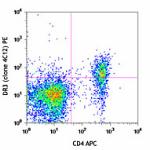
C57BL/6 mouse splenocytes were stained with CD4 APC and DR3 ... 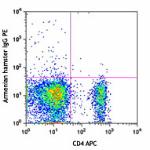
-
APC anti-mouse DR3 (TNFRSF25)
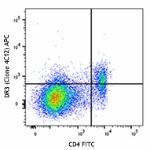
Mouse splenocytes were stained with CD4 FITC and anti-mouse ... 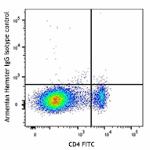
-
PE/Cyanine7 anti-mouse DR3 (TNFRSF25)

Mouse splenocytes were stained with CD4 FITC and anti-mouse ... -
Ultra-LEAF™ Purified anti-mouse DR3 (TNFRSF25)
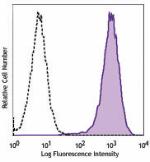
TNFRSF25 transfected p815 cells were stained with LEAF™ puri... 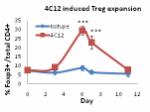
TNFRSF25 transfected p815 cells were stained with LEAF™ puri... -
TotalSeq™-C0836 anti-mouse DR3 (TNFRSF25)
-
TotalSeq™-B0836 anti-mouse DR3 (TNFRSF25) Antibody
 Login / Register
Login / Register 









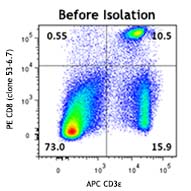
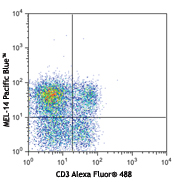
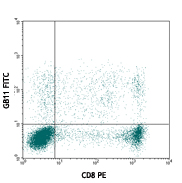
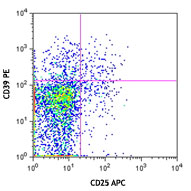



Follow Us